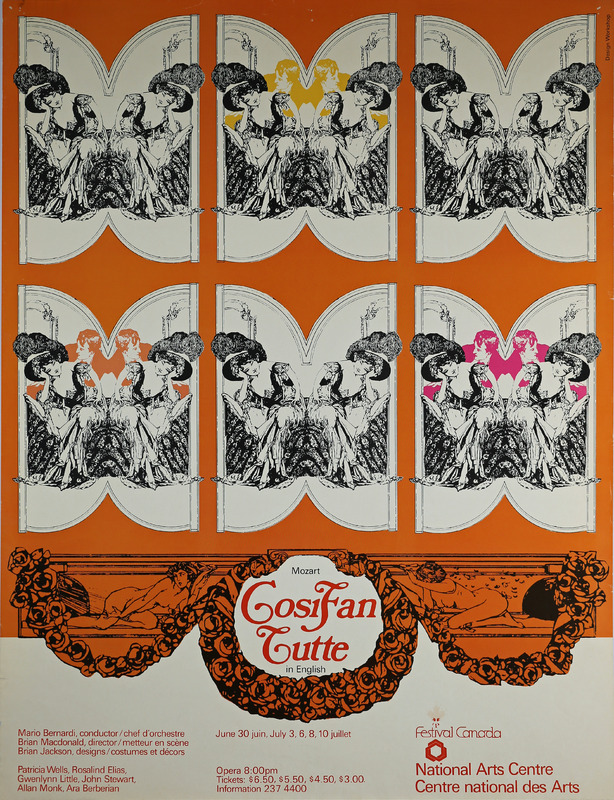The Early Years
The 1971/72 and 1972/73 Seasons
During their first years of operation, the National Arts Centre put on a variety of shows–popular music concerts, symphonies, ballets, shows targeted towards children, and operas. Because the NAC is a Crown Corporation of Canada, they have always received a portion of their operations funding from the federal government. But staging opera was a significant financial feat and this was evident from the first few seasons in which the NAC staged opera festivals.
Inaugural Seasons of Festival Canada
In July 1971, two years after opening, the National Arts Centre held their first annual arts festival, an idea first suggested in 1963. The original intent of the Festival was to be a showcase of Canadian performing arts. When planning the Festival (at this point renamed Festival Canada by the operations division at the NAC), it was decided that its primary focus would be opera and music. Theater festivals were common; music festivals were harder to come across. The first opera performed at the Festival was Mozart's The Marriage of Figaro, featuring an entirely Canadian cast (Claude Corbeil, Gwenlynn Little, Heather Thomson, Allan Monk and Judith Forst). Of the five performances of this opera during the 1971 Festival, all but one were entirely sold out. Other performances, such as ballet and orchestra shows, were put on throughout the Festival as well. Overall, it was determined that the Festival had been successful for the NAC. As outlined in the annual report detailing the 1971/72 season: “The public's response to the Festival...achieved an overall attendance of 86 [percent],” which, as detailed further in the report, “...encouraged [them] to make more ambitious plans for the future”, perhaps going as far as making the festival a national event” and a “major reason for visiting the capital in July” (National Arts Centre 1972, 15).
In this inaugural season, opera made a gross revenue of $109,099.50 and an attendance of 73.4 percent. That year the NAC had spent $2.9 million on performances. They were able to make $1.7 million in box office revenue with the remaining $1.2 million coming from their annual budget from the federal government. At this point, we can see opera was still doing fairly well as they only spent $359,311 of their budget on Festival Canada (National Arts Centre 1972, 15).
Increasing the Number of Operas on the NAC Stage
By their second season, the NAC was producing and presenting operas in addition to those of Festival Canada. While operas are incredibly expensive to produce and present, and difficult to secure, performances of Tosca and Eugene Onegin occurred, along with two performances of Cavelleria Rusticana and I Pagliacci (National Arts Centre 1973, 29). The 1972-1973 annual report mentioned that the total cost for administration alone that season was $7.8 million; $3.7 million was from their federal funding, $3.7 million was covered by the Centre’s revenue, and the remaining $0.4 million was obtained through reserve funds from previous years.
During the Summer Festival, organized by Festival Canada and the National Arts Centre, the box office managed to increase its revenue by roughly 20 percent, but had a lower attendance rate. This may be attributed to a higher volume of performance dates. Nonetheless, throughout the early 1970s, and within only a few years of their original opening on June 2, 1969, it was evident that putting on an opera was an extremely expensive feat for the National Arts Centre. In the 1971-1972 season, the Festival cost them $359,311. By the 1972-1973 season, this number had nearly doubled, coming to a total of $642,715. The revenue from the box office did not match this as the gross revenue had increased (National Arts Centre,1973, 29).

